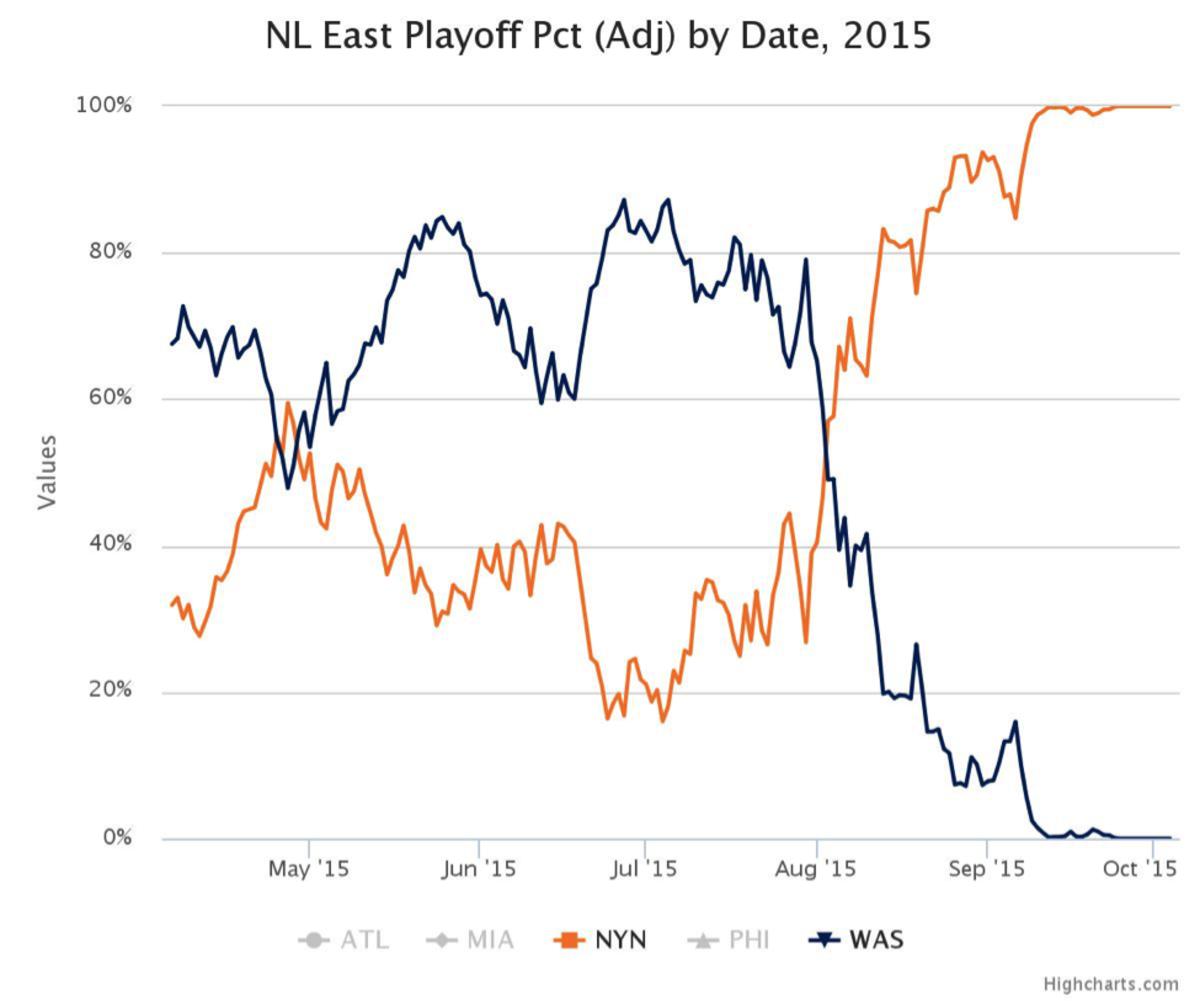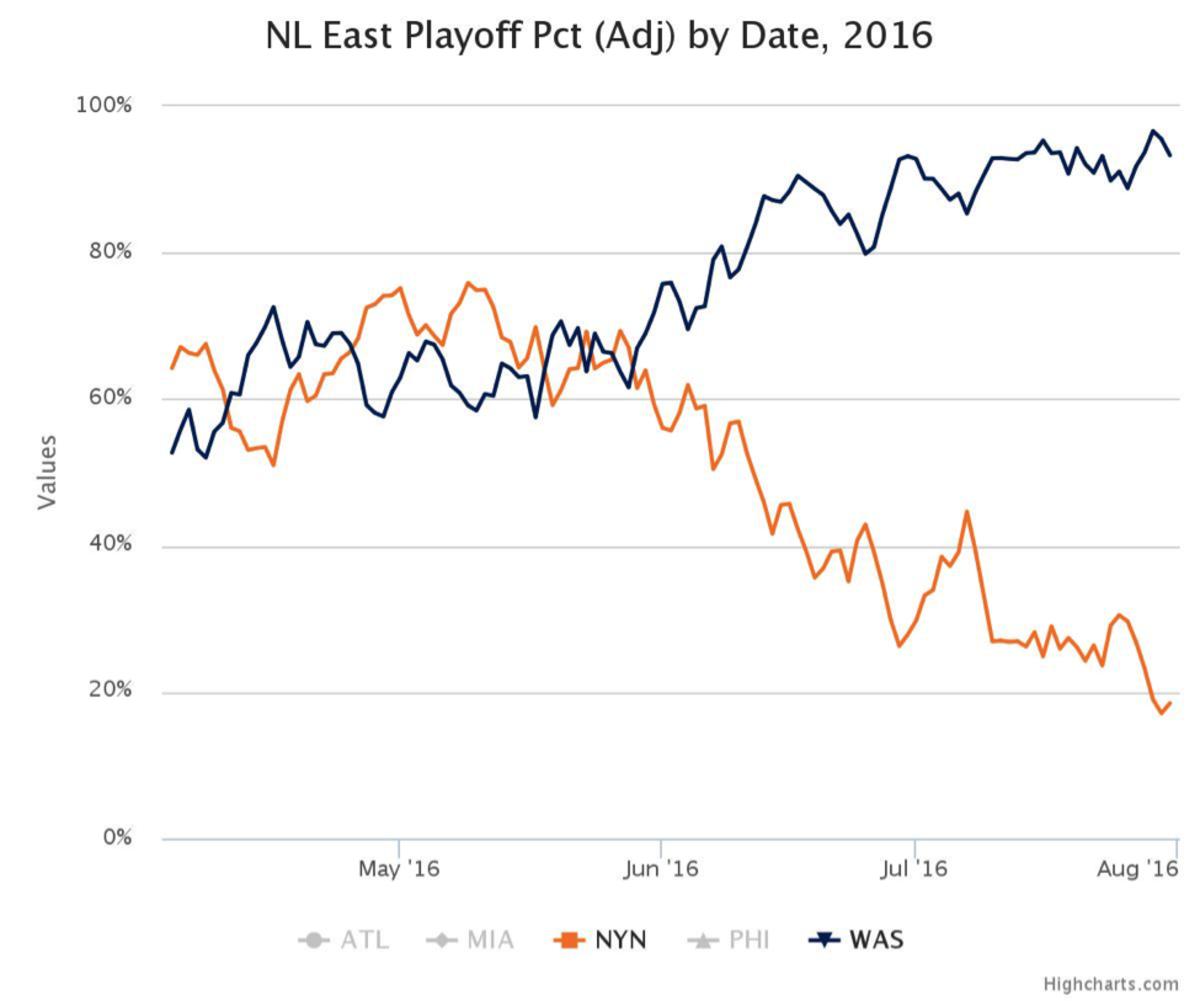Jay Bruce a strange fit with Mets, who still face long playoff odds

History repeated itself for the Mets leading up to Monday afternoon’s non-waiver trading deadline. An agreed-upon trade for a National League Central outfielder was held up by an issue with the medicals of one of the players involved, only for the Mets to pull out a deal during the final minutes before the deadline for a power-hitting corner outfielder who doesn’t fit perfectly in their outfield but should significantly upgrade their lineup. Last year, those outfielders were Carlos Gomez and Yoenis Cespedes. This year, it's Jay Bruce.
The Mets initially agreed to trade centerfielder Brandon Nimmo and two prospects to the Reds for Bruce, but about 2 1/2 hours before the 4 p.m. ET deadline, news broke that the trade was being held up by a medical issue. The restructured deal, which was finalized in the waning minutes before the deadline, found the Mets dropping the injured third prospect and upgrading the centerpiece of the deal from Nimmo to second-base prospect Dilson Herrera. The final return for Bruce is thus Herrera and 19-year-old lefty Max Wotell, the Mets’ third-round pick in the 2015 draft.
• Trade deadline recap: Get caught up with every move
Though the identity of the injured prospect was never made public, the revamped deal is an improvement for the Reds and cuts deeper for the Mets. Herrera, whom New York originally acquired from the Pirates in a 2013 waiver trade for Marlon Byrd, was considered the Mets’ second baseman of the future and was likely to succeed free agent Neil Walker at the keystone next year. A career .299/.362/.469 hitter in the minors who will be 23 next year, Herrera—who already has 169 major league plate appearances under his belt and five team-controlled years remaining—now becomes Brandon Phillips’s heir apparent at second in Cincinnati.
Exactly how soon that transition will happen remains to be seen, as Phillips is owed $14 million for next season, the final year on his contract. The Reds already tried to trade the veteran in December, only to have him invoke his 10-team no-trade clause, and may try again this winter or even in August, as Phillips should easily pass through waivers. With shortstop Zack Cozart (for whom a deal with the Mariners withered on the vine on Monday) also entering his final year of team control, the Reds now appear ready to transition to their next-generation double-play combination of Herrera and Jose Peraza.
The Mets, of course, are far less worried about what their middle infield will look like next year than about getting back to the playoffs this year. Bruce, however, is more than just a rental. He arrives in New York with a $13 million club option for 2017 that will give the team more options when contending with the free agencies of Walker and Cespedes (who is a lock to opt out of his contract) this fall. With Bruce in place in one outfield corner, the Mets could let the more-expensive Cespedes walk and try to re-sign Walker, or they could try to trade Bruce’s walk year for a second baseman and try to lure Cespedes back yet again.
As for reaching the playoffs this year, however, even with Bruce in place, the Mets’ post-deadline history is far less likely to repeat. Entering Monday night’s action, New York is in third place in the NL East, six games behind the impressive Nationals in the loss column, and has just a 5% chance of winning their division, according to Baseball Prospectus’ Playoff Odds Report. That may be just three games further behind than the Mets were on deadline day a year ago, but the overall picture is literally very different.
Here’s a chart of the Mets and Nationals’ playoff odds from last season, showing that Washington had already begun its collapse before the July 31 deadline. The Mets had a 23% chance of winning their division when they acquired Cespedes from the Tigers for Michael Fulmer and Luis Cessa and had been as high as 39.6% just three days earlier.

Now here’s this year:

Notice how things are trending strongly in the opposite direction. Also not pictured in the second graph: the Marlins, who slipped ahead of the Mets on Sunday in the standings and their projected chances of making the playoffs. The Mets do have a 27.3% chance of making it to the wild-card game, but the six teams ahead of them in the standings all have a better chance, and New York needs to pass two of them to sneak in as the visiting team in the wild-card game.
• Dodgers bolster rotation, outfield with deal for Hill and Reddick
Bruce inarguably improves the Mets' lineup, but that is undermined by the impact he could have on their outfield defense. Through the end of July, the only two major league teams New York had managed to out-score were the Phillies and Braves, and the lineup's 3.7 runs per game this season are barely more than the 3.6 it had scored before Cespedes arrived last year. The Mets scored 5.3 runs per game after adding Cespedes, but not only did he do some of the best hitting of his career in a Mets uniform, but New York also added Michael Conforto, Travis d’Arnaud and David Wright to the lineup around the same time, with the latter two returning from long disabled list stays; all three produced.
This year, the Mets are not getting Wright back from his season-ending neck surgery, and in the last three days, they have lost Juan Lagares (torn ligament in left thumb), Jose Reyes (strained oblique) and Asdrubal Cabrera (patellar tendon strain) to injuries, with the first two landing on the DL. Lucas Duda, one of the Mets’ key bats last year, isn’t due to return from the stress fracture in his back until the end of the month, at best, and while d’Arnaud is healthy, he’s not hitting.
• Yankees build for future as Andrew Miller trade nets strong return
Bruce doesn’t fix any of those problems, nor does he address the concerns about the rotation stemming from the loss of Matt Harvey to thoracic outlet syndrome and the discovery of bone spurs in the elbows of Steven Matz and Noah Syndergaard. With regard to the latter, the Mets made a second trade at the deadline, reacquiring Jon Niese from the Pirates for Antonio Bastardo and cash, returning the two lefties to their 2015 clubs. Niese will slot behind Jerry Blevins as the second lefty in the bullpen and be available to step into the rotation if needed, but he was awful as a starter for Pittsburgh this year, posting a 5.13 ERA with a 1.57 WHIP, 1.97 strikeout-to-walk ratio and 20 home runs allowed in just 101 2/3 innings.
Then there’s exactly how the Mets will manage to shoehorn Bruce into the outfield. Having finally soured on Cespedes as a centerfielder, the Mets seem to be planning to put Cespedes in left and Bruce in right. That will force Curtis Granderson back to center, a position where he has started just three games in the last two years and 14 games in his three years as a Met, because it became clear in his final years with the Yankees that he was no longer viable at the position. Backing up Granderson will be some combination of Conforto, Nimmo, Alejandro De Aza and recent signee Justin Ruggiano, one of whom will be removed from the 25-man roster to make room for Bruce. All but the last are, like Granderson and Bruce, lefthanded, which eliminates platoon possibilities, and only Nimmo is truly viable at the position. All of that makes the injury to Lagares, a slick-fielding centerfielder and righthanded hitter, all the more problematic.
• The 30: Miller trade a boost for Indians, who rise in power rankings
If Bruce were an MVP-quality masher like Cespedes, he might be able to out-hit these drawbacks enough to still have a big impact. But while he has plentiful power, he struggles to produce in other ways. Bruce has slugged .559 this year with 25 home runs and an NL-leading 80 RBIs on a poor Reds team, but he has only gotten on base at a .316 clip. After adjusting for his power-friendly ballpark, that leaves him with a 128 OPS+—very good, yes, but not elite. He is also coming off a pair of lousy seasons (.222/.288/.406, 91 OPS+) that highlight the collapse-potential in his bat. Bruce has reduced his strikeouts this year, posting his lowest strikeout rate (20.5%) since 2009, but his walks have dropped with the whiffs, giving him a career-low free-pass rate (6.7%). Both of those rates are comparable to Cespedes’s career averages, but he has an ability to hit for average that Bruce, whose current .265 average is the second-highest of his career, lacks.
History won’t repeat itself for the Mets this year, because the Nationals are better than they were last year in a variety of ways. Bruce isn’t as good a player as Cespedes, and he won’t be getting the support the Cuban star received from the Mets’ other late-season upgrades last year. The Mets aren’t closing in on Washington; they’re falling further behind. Bruce creates some resistance to that trend, but he’s unlikely to help the Mets return to the playoffs this year.
